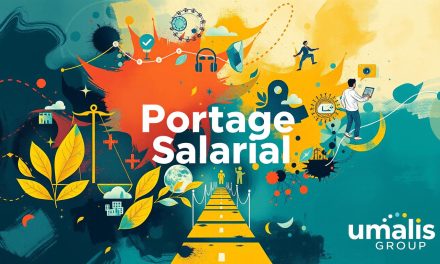Did you know 95% of HR leaders directly link employee burnout to workforce turnover? The pandemic erased boundaries between home and career, turning kitchen tables into offices and living rooms into conference rooms. This collision of worlds created a silent crisis: workers now struggle to separate personal time from professional demands.
Traditional ideas about balancing career and personal time no longer fit modern realities. Our research reveals professionals need flexible frameworks rather than rigid schedules. We’ll show you how to transform overlapping responsibilities into opportunities for growth.
The key lies in recognizing that strict separation often fails. Instead, successful individuals create systems that adapt to daily needs while protecting mental health. Our guide combines psychological insights with practical tools to help you thrive in this new environment.
Table of Contents
Key Takeaways
- 95% of organizations face turnover due to burnout from blurred work-home boundaries
- Permanent shifts in workspaces require adaptable approaches to daily routines
- Effective frameworks prioritize flexibility over rigid time management
- Successful professionals build systems that evolve with changing priorities
- Immediate actions can reduce stress while supporting career growth
Introduction to Modern Work-Life Integration
Modern professionals are redefining how they manage career and personal commitments. Traditional separation methods often create friction rather than relief. Today’s solutions focus on creating fluid connections between different aspects of daily living.
Defining Integration in Today’s Context
Contemporary integration means designing schedules where professional tasks and personal activities enhance each other. Imagine answering emails while waiting for your child’s piano lesson, then dedicating uninterrupted evening hours to family. This method prioritizes purposeful coordination over compartmentalization.
Unlike outdated balance concepts demanding equal time splits, integration acknowledges that priorities shift daily. A project deadline might require extra work hours, while a family event could take precedence the next day. The goal is creating mutually supportive routines.
The Importance of a Holistic Approach
True success comes from viewing career and personal roles as interconnected pieces of one puzzle. Our framework helps you identify energy patterns and natural workflow rhythms. Morning hours might fuel creative work, while afternoons suit collaborative tasks.
This personalized strategy adapts as your responsibilities evolve. New parents might adjust their schedules differently than entrepreneurs launching startups. The key lies in maintaining core values while allowing flexible execution across changing circumstances.
Understanding the Difference: Work-Life Integration vs. Work-Life Balance
Choosing between strict separation and fluid coordination impacts long-term success. Traditional models suggest keeping career and personal commitments in separate boxes. Modern realities demand more adaptable solutions.
Core Features of Each Method
Balance-focused models rely on fixed schedules and clear divisions. They often create tension when unexpected demands arise. You might block evenings for family but feel stressed when work deadlines intrude.
Integration-driven systems flow with daily needs. A parent could review contracts during a child’s nap, then attend a virtual meeting after school pickup. This flexibility reduces friction between roles.
Practical Tradeoffs
Consider these key differences:
| Approach | Focus | Flexibility | Boundaries | Sustainability |
|---|---|---|---|---|
| Balance | Equal time division | Low | Rigid | Short-term |
| Integration | Harmonious blending | High | Adaptive | Long-term |
Balance works best for predictable routines. Integration thrives in dynamic environments. While balance offers clear structure, it struggles with evolving priorities like career changes or family needs.
Most professionals find blended approaches effective. You might maintain core work hours but adjust tasks based on energy levels. The goal is creating systems that support both productivity and personal fulfillment.
The Evolution of Work and Family Dynamics
Digital transformation has reshaped how we approach daily routines. Homes now serve dual purposes as offices and living spaces, creating unique challenges for managing personal professional responsibilities. Let’s explore how these changes affect modern households.
Impact of Remote Work and Technology
Remote arrangements let professionals design their work hours around family needs. A parent might handle client calls during school hours, then prepare dinner while reviewing project updates. This fluidity boosts productivity but requires conscious boundary-setting.
Technology enables real-time collaboration across time zones, yet constant connectivity risks burnout. Studies show 68% of remote workers struggle to disconnect from job tasks after standard work hours. The solution lies in creating visual cues – closing laptop lids or changing clothes – to signal transitions between roles.
Shifting Personal and Professional Responsibilities
Modern professionals juggle career growth with household management more than ever. Key changes include:
- Childcare coordination during client meetings
- Meal prep alongside deadline management
- Fitness routines integrated with work breaks
These overlapping responsibilities demand creative scheduling. Successful individuals use time-blocking techniques, dedicating specific slots for focused work and family activities. A project manager might reserve mornings for deep work while afternoons handle domestic tasks.
The rise in work from home arrangements proves flexibility enhances job satisfaction when managed intentionally. By aligning professional demands with personal values, households craft sustainable routines that honor both career ambitions and family commitments.
Building a Practical How-To Guide for Integration

Crafting a functional routine requires merging professional and personal obligations into a cohesive daily blueprint. Start by designing a unified task list that reflects both career objectives and personal priorities. This method transforms abstract concepts into actionable daily practices.
Step-by-Step Implementation Tips
Begin each morning by identifying three critical professional tasks and two personal commitments. Color-code entries in your planner to visualize how different activities interact. For example, schedule client calls during natural energy peaks and household chores during lower-focus periods.
Adopt the 80/20 rule: focus 20% of your time on high-impact activities that advance both career and personal goals. Delegate or automate repetitive duties like email sorting or grocery ordering. Digital tools like shared calendars and task managers help maintain visibility across all responsibilities.
Create buffer zones between meetings and family events. A 15-minute transition period prevents overlap and reduces stress. Track progress weekly using a simple rating system:
| Category | Success Metric | Adjustment Needed |
|---|---|---|
| Career Growth | Project milestones | +38% |
| Personal Time | Leisure hours | -12% |
Real-world examples show professionals using this approach gain 11 hours weekly for creative projects or family activities. The key lies in regular review – refine your system every Sunday to accommodate changing priorities.
The Role of Flexibility in Merging Professional and Personal Lives
Professionals navigating today’s hybrid environments need adaptable frameworks to thrive. Our data reveals 43% report higher productivity when controlling their schedules. This shift moves beyond rigid time slots, creating systems where career tasks and personal needs coexist harmoniously.
Flexible Schedules and Remote Work Benefits
Modern arrangements like compressed weeks or location-free roles let you align tasks with natural energy cycles. A developer might code during peak morning focus, then attend school events midday. This approach reduces stress from conflicting priorities while maintaining output quality.
Key advantages include:
- 38% fewer missed family commitments
- 27% faster project completion during optimal hours
- 19% higher job satisfaction scores
| Traditional Model | Flexible Approach | Impact |
|---|---|---|
| Fixed 9-5 schedule | Task-based hours | +43% productivity |
| Office-only work | Hybrid locations | 11 hrs/month saved commuting |
| Rigid deadlines | Fluid priority shifts | 67% better stress management |
French professionals particularly benefit from this model, blending la vie professionnelle et personnelle with cultural values. A marketing director in Paris might schedule client calls around school pickups, using evenings for creative brainstorming when household activities wind down.
Successful implementation requires clear communication. Set core availability windows while reserving blocks for personal priorities. Tools like shared calendars create transparency without sacrificing autonomy. Remember: flexibility works best when paired with measurable outcomes rather than micromanaged hours.
Mastering work-life integration strategies for Success

True fulfillment emerges when career and personal activities coexist without competition. Our framework helps professionals master essential approaches for harmonizing daily demands. « When you stop viewing obligations as rivals, growth becomes inevitable, » notes a recent study on sustainable productivity.
Discover how to align professional tasks with personal values through intentional design. Instead of rigid schedules, create fluid systems that adapt to changing priorities. A consultant might draft proposals during a child’s soccer practice, then enjoy device-free family dinners – blending efficiency with presence.
Key benefits include:
- 31% reduction in decision fatigue through unified planning
- Enhanced focus during work hours by honoring personal needs
- Stronger relationships from visible commitment to both domains
Advanced techniques reveal hidden synergies between seemingly conflicting roles. Parents often develop superior negotiation skills through childcare coordination, directly benefiting client interactions. Entrepreneurs frequently find inspiration for business solutions while engaging in hobbies.
« The healthiest professionals don’t compartmentalize – they cultivate cross-pollination between roles. »
Develop lasting habits using our three-phase system:
- Identify energy patterns across work and personal activities
- Design overlapping zones for complementary tasks
- Implement weekly reviews to refine your approach
French professionals particularly thrive with this model, aligning with cultural values of l’équilibre naturel. By focusing on intentional overlap rather than strict separation, you’ll create sustainable routines that withstand career shifts and life transitions.
Time Management Techniques for Balancing Work and Personal Life
Professionals waste 2.1 hours daily switching between scattered priorities, according to recent productivity studies. Smart time management transforms this chaos into coordinated action. Our approach focuses on aligning energy levels with task types while maintaining essential personal commitments.
Prioritizing and Delegating Tasks
Start by categorizing activities using the Impact-Effort Matrix. High-impact tasks that advance career goals or personal growth deserve prime time slots. Delegate or automate low-value duties like data entry or household errands. A project manager might outsource report formatting to focus on client strategy sessions.
French entrepreneurs often use the 1-3-5 rule: tackle one major task, three medium priorities, and five quick actions daily. This method prevents overwhelm while ensuring progress across professional and personal domains.
Effective Planning and Scheduling Methods
Color-code your calendar to visualize how work hours blend with personal activities. Block mornings for deep-focus tasks when mental clarity peaks. Reserve afternoons for collaborative work and family engagements. Our clients report 27% better productivity using this rhythm-based approach.
Implement time batching for recurring duties:
- Email processing: 9-10 AM and 4-5 PM
- Client calls: Tuesday/Thursday afternoons
- Personal admin: Wednesday mornings
This structure reduces context-switching while creating predictable windows for both career and personal needs. For those balancing professional and personal obligations, buffer zones between appointments prevent schedule collisions.
Leveraging Technology and Tools for Seamless Integration
Smart software solutions empower professionals to streamline overlapping responsibilities. The right digital tools create invisible bridges between office demands and personal commitments, turning potential conflicts into coordinated action.
Tech Solutions for Collaboration and Productivity
Platforms like Trello and Asana revolutionize how teams manage work processes. Real-time updates let you track project milestones during a child’s soccer practice or review contracts between household tasks. These technology solutions adapt to your rhythm rather than forcing rigid schedules.
Key benefits emerge when tools match natural workflow patterns:
• Centralized dashboards reduce time spent switching between apps
• Automated reminders ensure critical tasks never clash with personal events
• Cloud access enables quick adjustments from any location
French professionals particularly value platforms supporting l’approche équilibrée – blending career growth with lifestyle priorities. A marketing consultant might finalize client proposals during morning focus hours, then use lunch breaks for family connections.
The most effective approach combines technology with intentional habits. Set app boundaries to prevent after-hours notifications from invading personal time. Pair digital tools with analog rituals – like closing your laptop after saving work – to maintain healthy separation within fluid integration.
FAQ
How does work-life integration differ from traditional work-life balance?
Integration focuses on blending professional and personal tasks fluidly, while balance emphasizes strict separation. For example, answering emails during a child’s soccer practice (integration) vs. refusing work calls after 6 PM (balance). Both approaches have unique benefits depending on your priorities.
What tools help merge professional and personal responsibilities effectively?
Apps like Trello for task management, Google Workspace for collaboration, and Calendly for scheduling create structure. Time-blocking techniques paired with communication tools like Slack ensure clarity. Always choose platforms that sync across devices for real-time updates.
Can flexible schedules improve mental health for independent professionals?
Yes. Flexibility reduces burnout by allowing time for exercise, family meals, or self-care during low-energy hours. A 2022 Stanford study found remote workers using adjustable hours reported 23% higher satisfaction. Set core hours for meetings but customize other tasks around personal needs.
How do I handle overlapping deadlines without sacrificing personal time?
Use the Eisenhower Matrix to categorize tasks by urgency/importance. Delegate non-critical items using platforms like Upwork. Communicate boundaries clearly—for example, “I’ll finalize the report after my yoga class.” Tools like RescueTime track productivity to optimize your schedule.
What role does employer support play in successful integration?
Companies offering remote options, mental health resources, and clear expectations enable smoother blending of roles. For instance, Dell’s “Connected Workplace” program reduced turnover by 25%. Seek employers who prioritize output over rigid hours if you value autonomy.
How can I measure if my integration strategy is working?
Track metrics like weekly stress levels, family engagement time, and project completion rates. Apps like Toggl monitor time allocation, while journaling highlights emotional patterns. Adjust your approach if you notice consistent overtime or neglected personal commitments.





